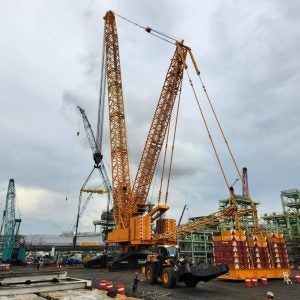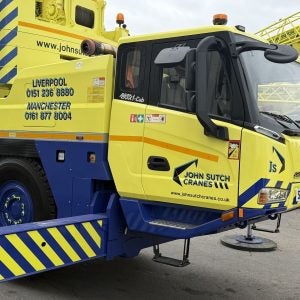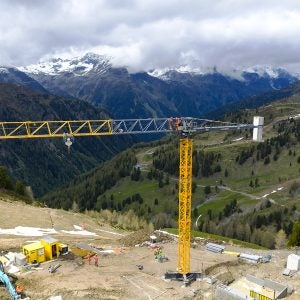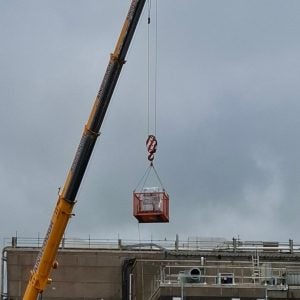Graham Heywood, Site Manager for APC explained that they had seen self-erecting cranes used in Ireland and investigated the potential benefits they could provide to the type of work they do in power generating plant erection. Their analysis showed that, on simple economics alone, the cost of putting in place a tower crane could give considerable savings compared to the cost of hiring mobile cranes.
“Because of the height and reach to lift loads, we often have to hire cranes with much larger lifting capacity than required – these are expensive and, because of their size, can also cause inconvenience on site. On this project, we need to position loads at 13 m reach over a height of 12 m. Typical loads are less than 2t, although, the heaviest loads in this contract was three units each weighing 200t.
“The self-erecting crane solution requires no additional personnel and has definitely saved on both time and costs. Having a crane available at all times is a bonus and its footprint is so small that it does not create an obstruction on the site.”
The Terex CBR 40H, with an operating weight of 15,400 kg, is able to lift loads up to 2t at 23m (although the model can be configured to give a reach of 40m with a 1t load capacity). The banksman, who normally directs loads from mobile crane lifts, has been trained on using the remote control box so he is able to supervise the load from point of delivery throughout the entire lift to the final position.
The base is just 4.2m square and the entire crane can be transported on a single low loader. “Because the crane is powered by 400v power supply, which is available on the site, we also save the cost of diesel which, because of the higher fuel cost, is another significant saving,” says Graham Heywood, who now believes that APC will use such cranes on future contracts involving outdoor installations.
This is the first time APC has used a self-erecting tower crane during its 30 years in power station engineering. The company has up to 55 people on site at the Immingham site. The 14 months contract is to install gas turbines and steam turbines (centre line equipment) for main contractor, Black & Veatch Ltd. When completed in 2009, the station will generate 450 megawatts of electricity production.
Mantis Cranes has manufacturing facilities and a fleet of self-erecting tower cranes in Co. Donegal, Ireland.
Robert Rowlette, General Manager, Mantis Cranes explains: “Throughout mainland Europe, self erecting tower cranes are used extensively, however, this is not the case in the UK where telehandlers are the preferred tool for delivering materials around building sites. Using telehandlers involves secondary material handling as they are not able to deliver to the point of use. We are trying to educate contractors and builders of the economics that self-erecting tower cranes provide; their ease of use; flexibility and adaptability. We have also designed our own range of self-erecting tower cranes to better meet the specific requirements of the construction industry in the UK.”






